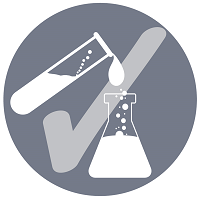Formulation and Delivery
Rapid Fires: Enabling Technologies and Materials for Formulation Innovation 2
Mitigating Alcohol Dose Dumping in Modified Release Drug Products
Tuesday, November 11, 2025
3:45 PM - 4:00 PM CT
Location: Stars at Night B2/B3

Nitin Kumar K. Swarnakar, Ph.D. (he/him/his)
NA Applications Lab Manager
BASF Corporation
Tarrytown, New York
Rapid Fire Speaker(s)
Modified-release (MR) oral drug products are designed to deliver therapeutic agents over an extended period. However, co-ingestion with alcoholic beverages can compromise their release profile, leading to alcohol-induced dose dumping (ADD)—a rapid and potentially dangerous release of the drug. This presentation explores the formulation and drug-specific factors that influence ADD risk and highlights in vitro methodologies used to assess this phenomenon. Regulatory agencies such as the FDA and EMA recommend different alcohol concentrations for testing (up to 40% and 20%, respectively), creating challenges for global product development. Moreover, in vitro results may not always predict in vivo behavior, complicating regulatory interpretation. This session will provide a concise overview of the scientific and regulatory landscape surrounding ADD, emphasizing the importance of robust formulation strategies and harmonized testing protocols to mitigate risk and ensure patient safety.
Learning Objectives:
- Identify formulation and drug-specific factors that contribute to alcohol-induced dose dumping (ADD) in modified-release oral drug products.
- Evaluate in vitro testing methodologies and understand their limitations in predicting in vivo ADD behavior.
- Compare regulatory expectations from agencies like the FDA and EMA, and explore strategies for harmonized testing and risk mitigation in global product development.


